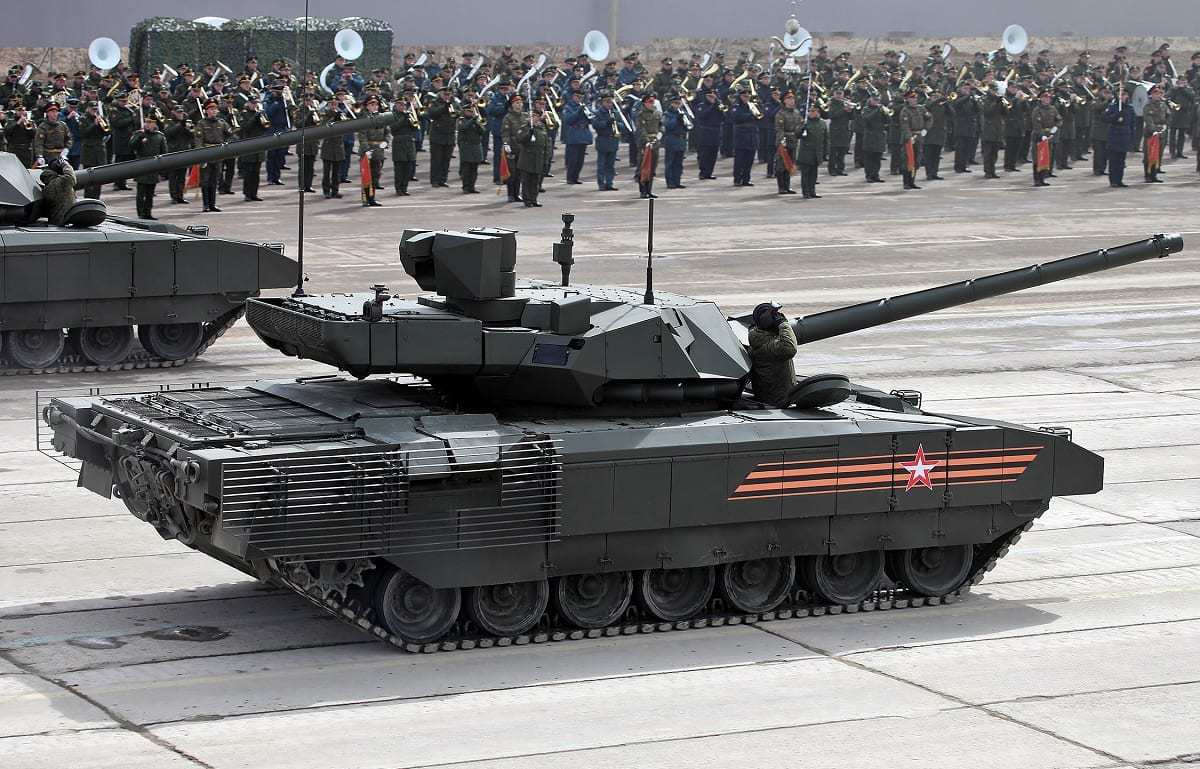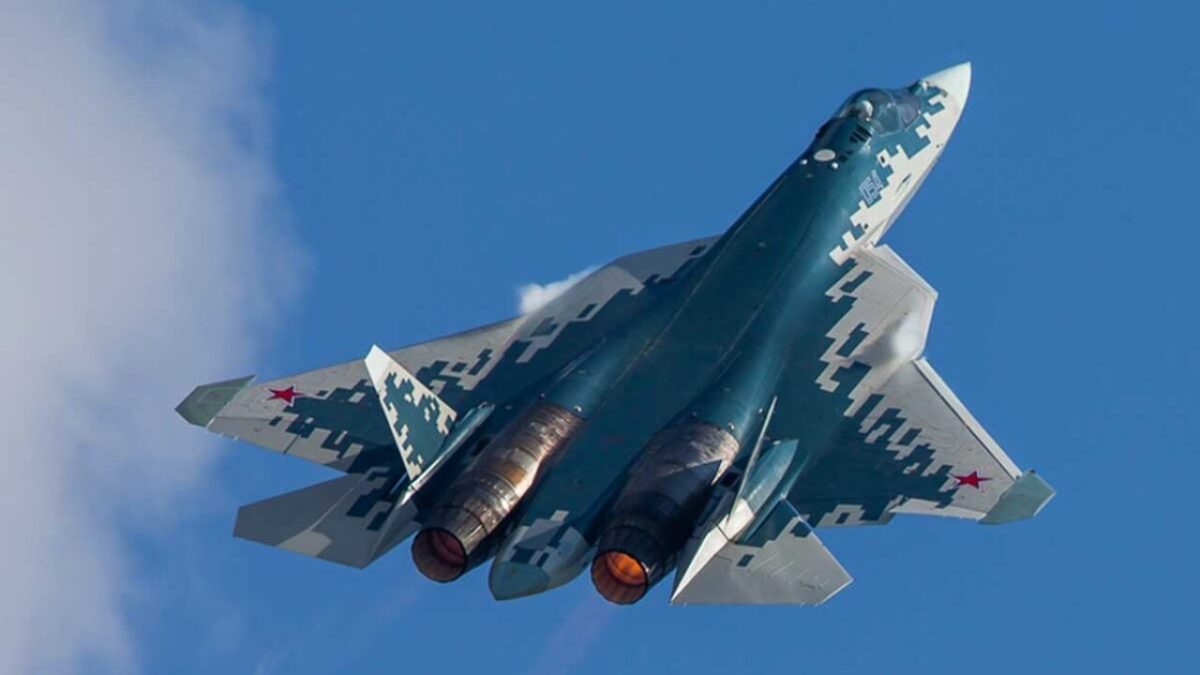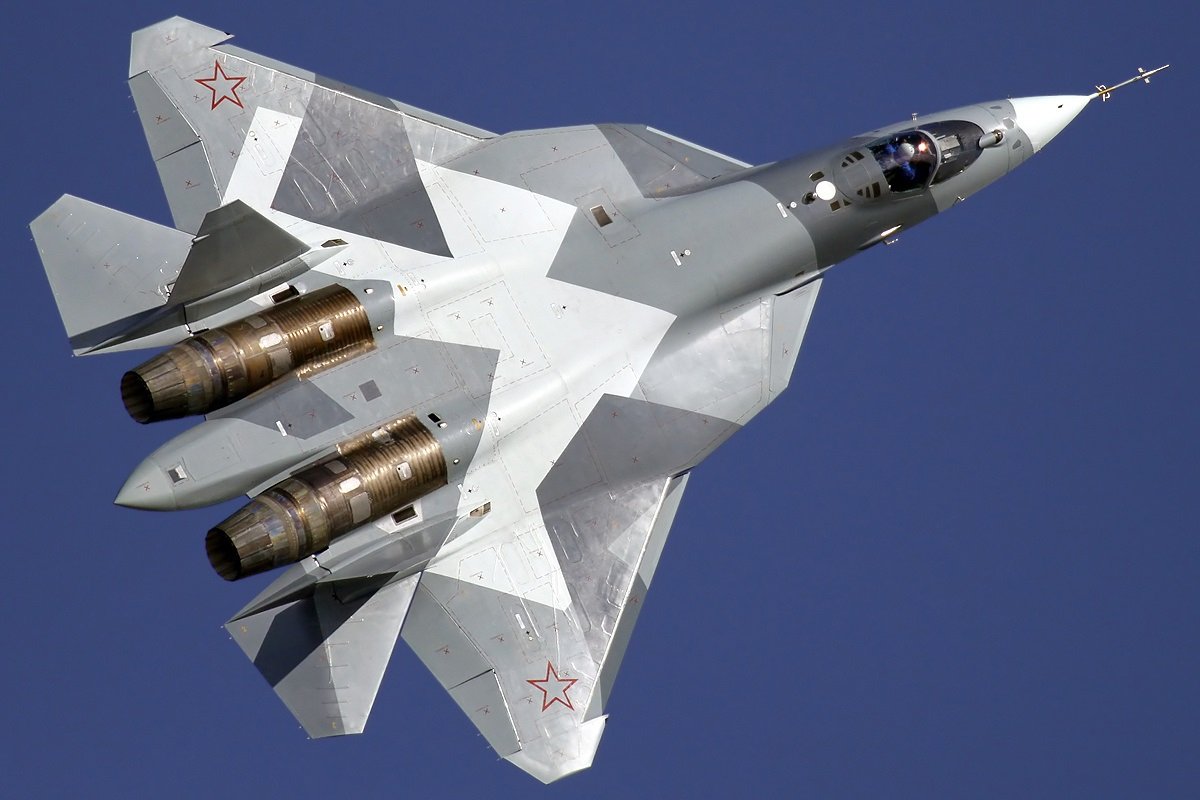Russia Conserves its Newest and Oldest Equipment in its Invasion of Ukraine – Over the course of Russia’s invasion, Ukraine has become something of a testing ground for all sorts of Russian equipment, from aircraft to tanks, to electronic warfare tools. However, some systems appear to have remained absent from the fight, or at least not an obvious part of Russia’s invasion.
No T-14 Armata Tank
Some of Russia’s most advanced ground and air systems which it promoted as future workhorses of the Russian armed forces do not appear to have seen service yet on the battlefields of Ukraine. On the ground forces side, Russia’s T-14 Armata tank has been conspicuously absent from the conflict. Reportedly boasting an advanced autoloader-serviced 2A82-1M smoothbore main gun, the Armata’s design also features a protected crew capsule as an advanced digital firing system.
There are several probable reasons why the Armata has remained far from the battlefields of Ukraine. The first of these is that only a handful of prototype T-14 Armatas have been built, which means that the loss of one or several of the tanks would be particularly painful, and the project’s future prospects as a model the Russian government seeks to buy thousands of examples of and to sell abroad would be placed in jeopardy. Secondly, with a steep price tag of around $3.7 million per unit and certain highly technical components, replacing destroyed Armatas would be a heavy burden for Russia’s heavily sanctioned defense production base to bear.

Main battle tank T-14 object 148 on heavy unified tracked platform Armata
No Su-57 Stealth Fighter in Ukraine
In the air, Russia’s Su-57 multirole fighter also appears to be absent from the battlefields of Ukraine, despite Russian claims to the contrary. Although Moscow claimed that the Su-57 began to see service in Ukraine from the first weeks of the invasion, there is no evidence that Russia’s Su-57s have seen any service in Ukraine (or combat service at all).
Russian sources frequently claim that the Su-57 has all the hallmarks of a fifth-generation fighter, such as stealth capability, advanced avionics, and high-tech networking and computing power. However, many of these capabilities are likely a long way off from being achieved, and the aircraft likely is missing many of the features possessed by analogous fifth-generation fighters such as the American F-35.

Russian Su-57 stealth fighter. Image Credit: Creative Commons.
Moscow’s interest in preserving its Su-57s might be similar to its interests in not risking the T-14 Armata – only a handful of the advanced fighter have been produced (both serially and as prototypes), and combat losses of the Su-57 to Ukraine’s mostly-outdated and Soviet-era air defense and air force arsenal would be an embarrassing black mark on the marketability of the aircraft in the future.
Some Legacy Equipment Still Remains in Storage
As the fighting in Ukraine chews through Russia’s current stocks of equipment at a steady pace, many outside observers have noted how Russia has begun to dig into its older stocks of Soviet equipment. In the first months of the war, Russia was forced to draw upon its stored units of certain artillery and air defense systems to keep pace with losses and demand for artillery systems as it switched gears to an artillery-heavy strategy in the battle for Donbas. Looming issues with producing certain high-tech components of some of Russia’s most modern weapons threaten to seriously complicate the production of certain systems, which could necessitate further digging into Russia’s Soviet-era arsenal.
Before the invasion, Russia possessed significant reserves of Soviet-era weaponry. While examples of practically every modern Russian tank in active service on the eve of Russia’s invasion has seen service (and losses) in Ukraine, Russia was estimated to have thousands upon thousands of older tank models such as the T-55, T-62, T-64, and T-72 in reserve. While most of these are likely still in storage, it is questionable if we will ever see them on the battlefield, as their extreme age means that making large contingents of such obsolete tanks operational a herculean endeavor, especially if they were poorly maintained while in reserve.
Other old armored vehicles, such as Russia’s MT-LB armored personnel carrier, appear to be coming out of storage now to service Russia’s buildup of reserves to support future offensives in Donbas.
Russia is Yet to Use Weapons Classified as Weapons of Mass Destruction
Of course, the weapons in Russia’s arsenal most conspicuously absent from the battlefield are its weapons of mass destruction.
While it has used nuclear-capable missiles to strike targets all over Ukraine, Russia has yet to use any nuclear weapons there, despite some saber-rattling on the subject earlier in the war. Russia’s sizeable and advanced arsenal of chemical weapons also appears to be off the table at the moment and have not been used.
While Russian threats to use weapons of mass destruction to ward off Western intervention against its invasion of Ukraine may be raised periodically by Moscow in the future, any use of such weapons would be detected instantly by Ukraine’s armed forces and international observers.
While this is by no means an exhaustive list of systems in Russia’s arsenal which have been withheld from the battlefields of Ukraine, it covers the main trends of which weapons Russia chooses to send to Ukraine, and which ones it keeps in its depots. When faced with the choice of risking some of its most advanced prestige systems which it has staked the credibility of its arms industry on, Russia has shown that it prefers not to risk a poor performance or battlefield losses of such systems by holding them in reserve.
On the older end of Moscow’s arsenal, Russia has begun to dig into its reserves of Soviet-legacy equipment primarily out of necessity. However, the actual quantity of such equipment that will actually see service remains to be seen.
Wesley Culp is a Research Fellow at the Center for the Study of the Presidency and Congress. He regularly writes on Russian and Eurasian leadership and national security topics and has been published in The Hill as well as in the Diplomatic Courier. He can be found on Twitter @WesleyJCulp.

